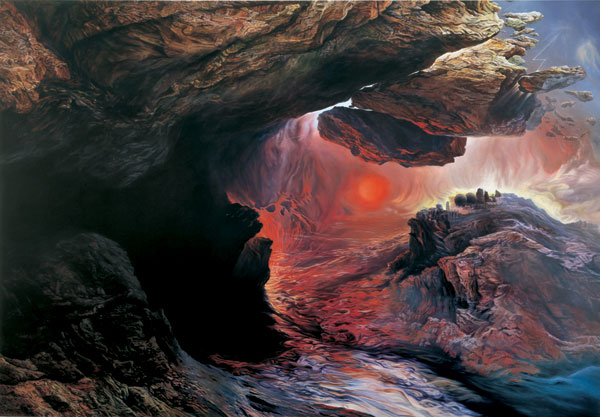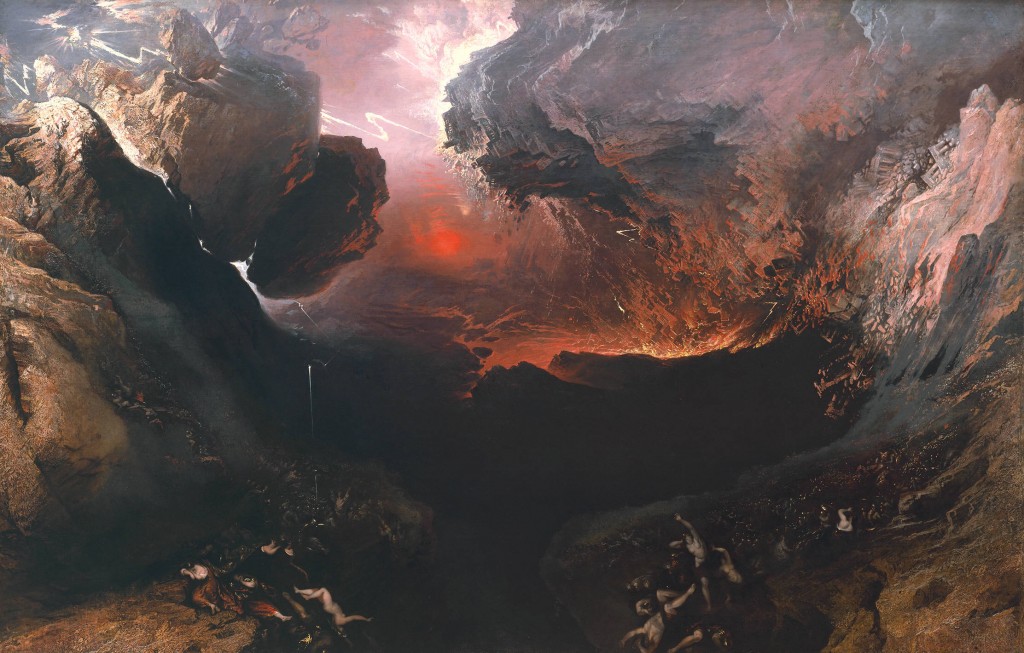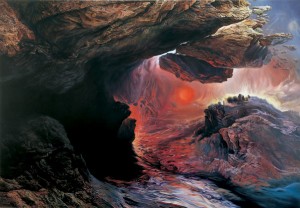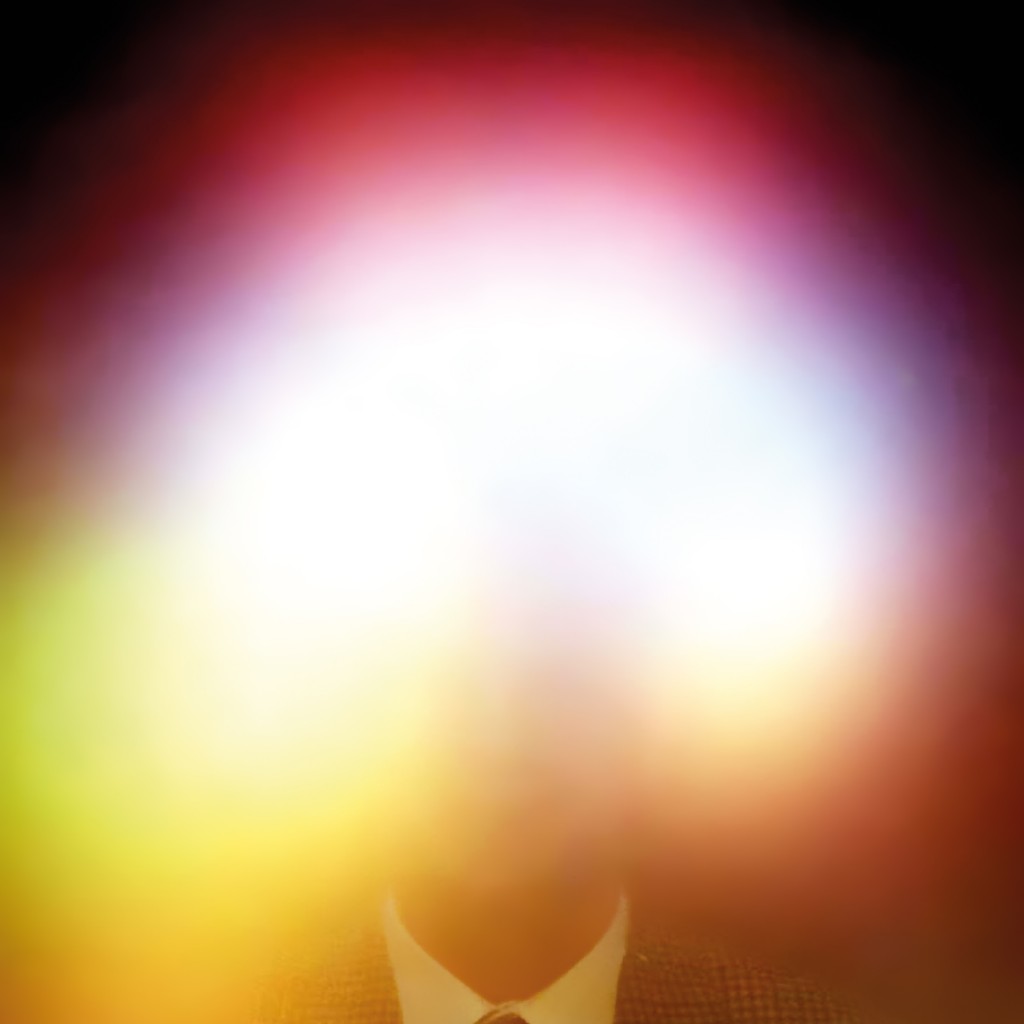It may be the last painting of the exhibition and it isn’t even one of John Martin’s, but Glenn Brown’s “Tragic conversion of Dali” is a great futuristic vision of the Apocalypse. One of the many artists inspired by Martin’s popular phenomenons. Vast sumptuous & deadly sceneries that became (both paintings & engravings) instant best-sellers and that contemporary film makers, comic and video artists have extensively used as a basis for their own works.

As classic & localish as any other of London’s Tate Britain exhibition may be, John Martin’s “Apocalypse” is a great look into the future by rescuing the 19th century bombastic & controversial fixation with biblical disasters and fantasy landscaping. The first major retrospective in 30 years, despite having had John Martin’s lithographs doing the world tour constantly.

There’s still a couple of months for you to visit, but there’s a good list of talks & screenings taking place during the coming weeks, and as good sci-fi lovers you all are this is the perfect mix of classy retro-futurism…. with a horror touch. A must.
share news item



